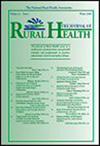Measuring disparities to emergency medicine with 200 million voter records: The case of rural hospital closures
Abstract
Purpose
Distance to health service providers is related to increased mortality risk and decreased service utilization. However, existing studies of distance to services often rely either on aggregated measures of distance or small samples of survey respondents. Nationwide individual data from 200 million Americans are used to assess various demographic groups’ distances to open acute hospitals.
Methods
We gathered the exact location of every open acute hospital from the UNC Cecil G. Sheps Center and the Department of Health and Human Services. We merged this information with data on 200 million voters from the L2 voter file for 2020. We calculate each registered voters’ distance to the nearest open hospital in kilometers by demographic, region, and state Medicaid expansion status.
Results
The average American adult is 5 miles from the nearest hospital. Native Americans and rural White Americans face the longest distances to medical services. Lower-income adults face longer distances than higher-income adults. Those over 65 are roughly 10% farther away in comparison to those 18-40. Registered Republicans are 30% farther than registered Democrats. Recent hospital closures in states that have yet to expand Medicaid have contributed to all of these disparities.
Conclusions
Lower-income and older Americans, groups that tend to have worse health overall, face the longest travel distances to hospitals—perhaps contributing to income and age-based health disparities. Native Americans and rural whites, who themselves experience considerable health hardship, also have significant travel burdens to receive hospital care. Registered Republicans have longer travels to emergency care than Democrats, adding to recent research on partisan health disparities.


 求助内容:
求助内容: 应助结果提醒方式:
应助结果提醒方式:


